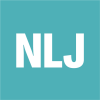Without a Safety Net: Precarization Among Young Danish Employees
DOI:
https://doi.org/10.18291/njwls.v7i3.97094Keywords:
Health, Working Environment and Wellbeing, Learning & compentencies, Gender, ethnicity, age & diversity, Employment, wages, unemployment & rehabilitation, Identity, meaning & cultureAbstract
Precarisation’ is one of the concepts that has become important in efforts to explain how neoliberal politics and changed economic conditions produce new forms of marginalization and increased insecurity. The aim of this article is to examine how subjectivity is produced among young Danish employees through socio-material processes of precarization at workplaces and employment projects. Drawing on ethnographic observations and qualitative interviews with 35 young employees and young people ‘Neither in Education, Employment or Training’ (NEET), the three case examples show how processes of precarization, rooted in global economic and political conditions, can be understood as situated contextual practices. It is demonstrated how being positioned as an easily replaceable source of labor is shaping young people’s processes of subjectification.Downloads
Published
How to Cite
Issue
Section
License
The Copyright Holder of this Journal is the authors and the Journal. Normally the journal use the CC-BY NC-ND 4.0 licence.
Exceptions to the license terms may be granted
If you want to use content in the Journal in another way then described by this license, you must contact the licensor and ask for permission. Contact Annica Asp at annica.asp@kau.se. Exceptions are always given for specific purposes and specific content only.
Sherpa/Romeo
The Journal is listed as a blue journal in Sherpa/Romeo, meaning that the author can archive post-print ((ie final draft post-refereeing) and author can archive publisher's version/PDF.
Copyright of others
Authors are responsible for obtaining permission from copyright holders for reproducing any illustrations, tables, figures or lengthy quotations previously published elsewhere.
Archives policy
All published material is archived at the Danish Royal Library in conformity with the Danish rules of legal deposit.
Plagiarism screening
We do not screen articles for plagiarism. It is the responsibility of the authors to make sure they do not plagiate.

 Associate Professor, The Danish Centre for Youth Research, Department of Learning and Philosophy, mail:
Associate Professor, The Danish Centre for Youth Research, Department of Learning and Philosophy, mail: Assistant Professor, The Danish Centre for Youth Research, Department of Learning and Philosophy
Assistant Professor, The Danish Centre for Youth Research, Department of Learning and Philosophy
 Researcher, Danish Ramazzini Centre, Department of Occupational Medicine
Researcher, Danish Ramazzini Centre, Department of Occupational Medicine



